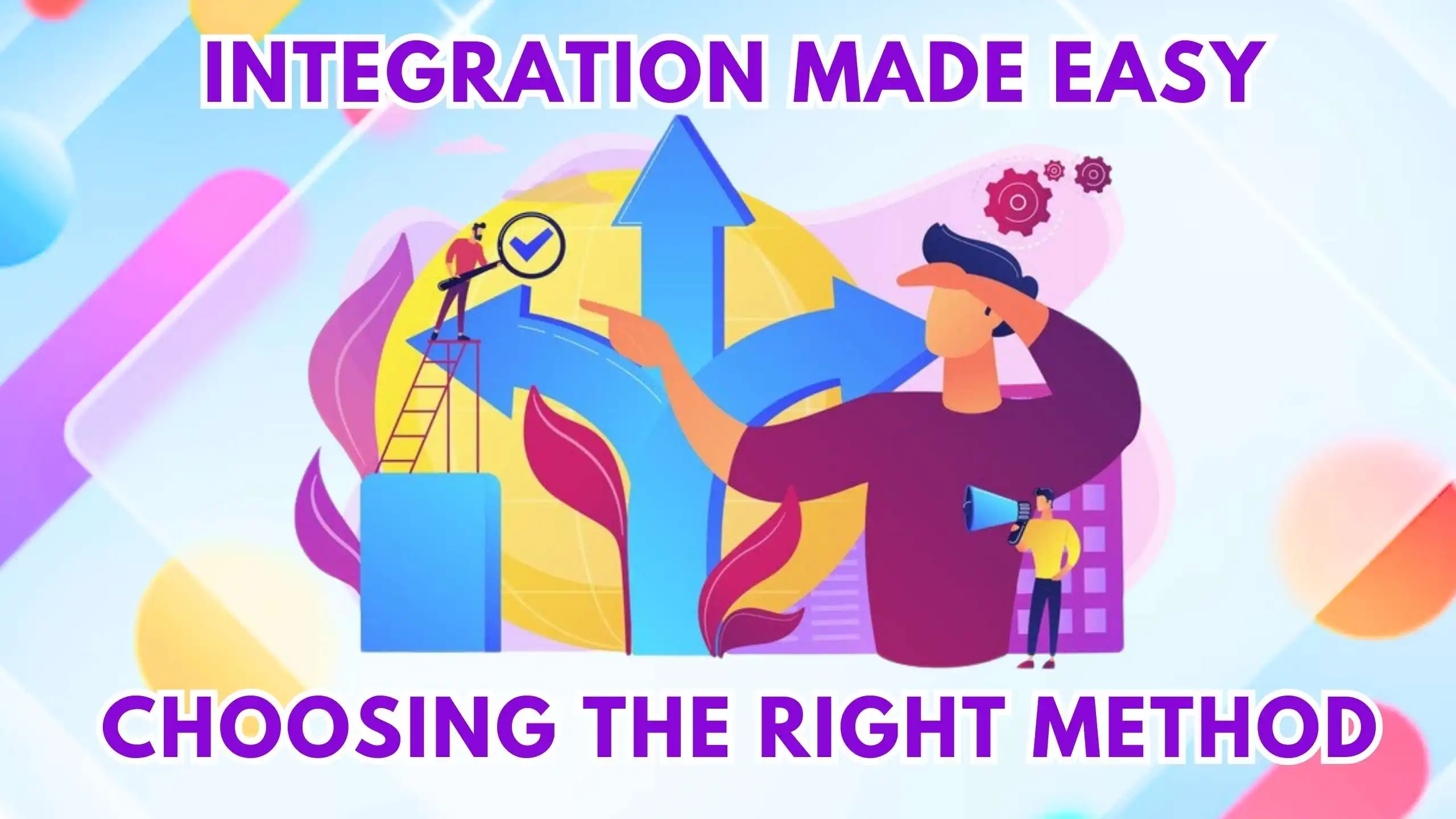Integration Made Easy: Choosing the Right Method
-


Integration Made Easy: Choosing the Right Method
In the dynamic landscape of SaaS, seamless integration is key to maximizing efficiency and productivity. Let’s explore the various methods of integration and guide you in selecting the right one for your business needs.
Understanding Integration Methods
1. API Integrations
API integrations, or Application Programming Interface, allow different software applications to communicate with each other. APIs act as bridges, facilitating the exchange of data between systems. Many SaaS products, such as Salesforce, leverage APIs for seamless integration, enabling users to sync data effortlessly.
2. Zapier Automation
Zapier simplifies integration by automating workflows between different apps. With a user-friendly interface, Zapier enables users to create “Zaps,” automating repetitive tasks across various platforms. It’s a versatile solution for businesses aiming to streamline processes without extensive coding.
3. Middleware Solutions
Middleware solutions, like MuleSoft, act as intermediaries between different applications. They provide a centralized platform to connect disparate systems, ensuring smooth communication. Middleware solutions are valuable for businesses dealing with complex data flows and diverse software environments.
4. Database Integrations
Integrating databases directly allows for the exchange of information between different systems. Microsoft SQL Server is an example of a database system that supports robust integration capabilities. This method is suitable for businesses handling large datasets and requiring real-time data synchronization.
5. Custom Integrations
For highly specific business needs, custom integrations may be developed. This involves tailoring integration solutions to meet unique requirements. Custom integrations provide flexibility but require skilled developers. Platforms like Tray.io empower users to create custom integrations without extensive coding knowledge.
Relevant SaaS Products
- Salesforce: Leverage API integrations for seamless connectivity in customer relationship management.
- Zapier: Automate workflows across various apps without coding, enhancing overall operational efficiency.
- MuleSoft: Implement middleware solutions for centralized integration and communication between applications.
- Microsoft SQL Server: Utilize database integrations for handling large datasets and ensuring real-time synchronization.
- Tray.io: Create custom integrations tailored to specific business needs, providing flexibility and control.
Conclusion
Choosing the right integration method depends on your business requirements, existing software infrastructure, and the level of customization needed. Whether you opt for API integrations, automation tools like Zapier, middleware solutions, database integrations, or custom development, a well-thought-out integration strategy can significantly enhance your operational efficiency and productivity.
Simplify Your Subscription Stack with Subscribed.fyi
Ready to streamline your SaaS subscriptions? Sign up for free at Subscribed.fyi to unlock exclusive deals on 100+ SaaS tools, saving you over $100,000 per year. Manage all your subscriptions effortlessly and make informed decisions with Subscribed.fyi’s centralized platform.
Subscribed.fyi Deals – Your secret deals are just a click away!
Relevant Links:











